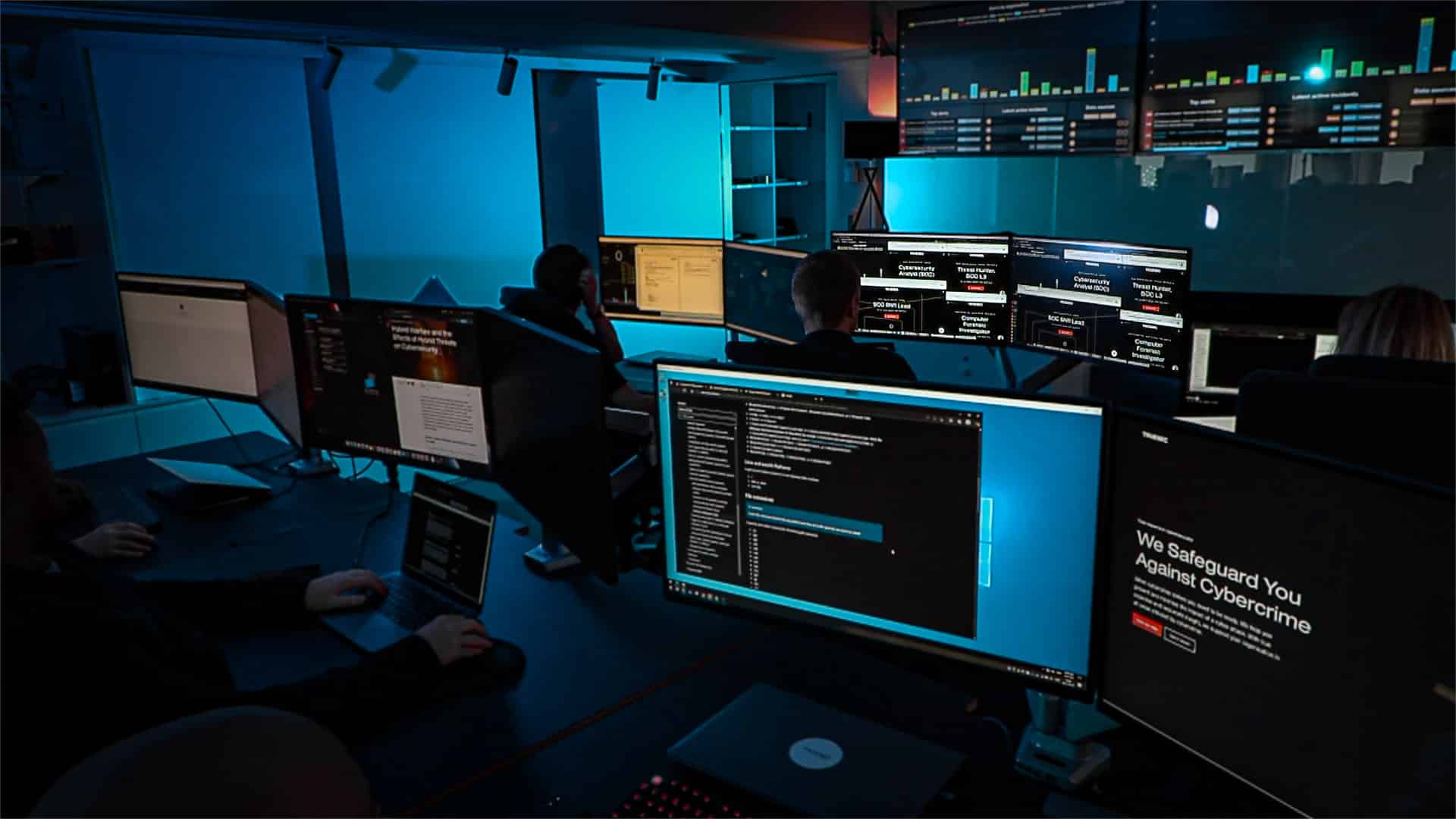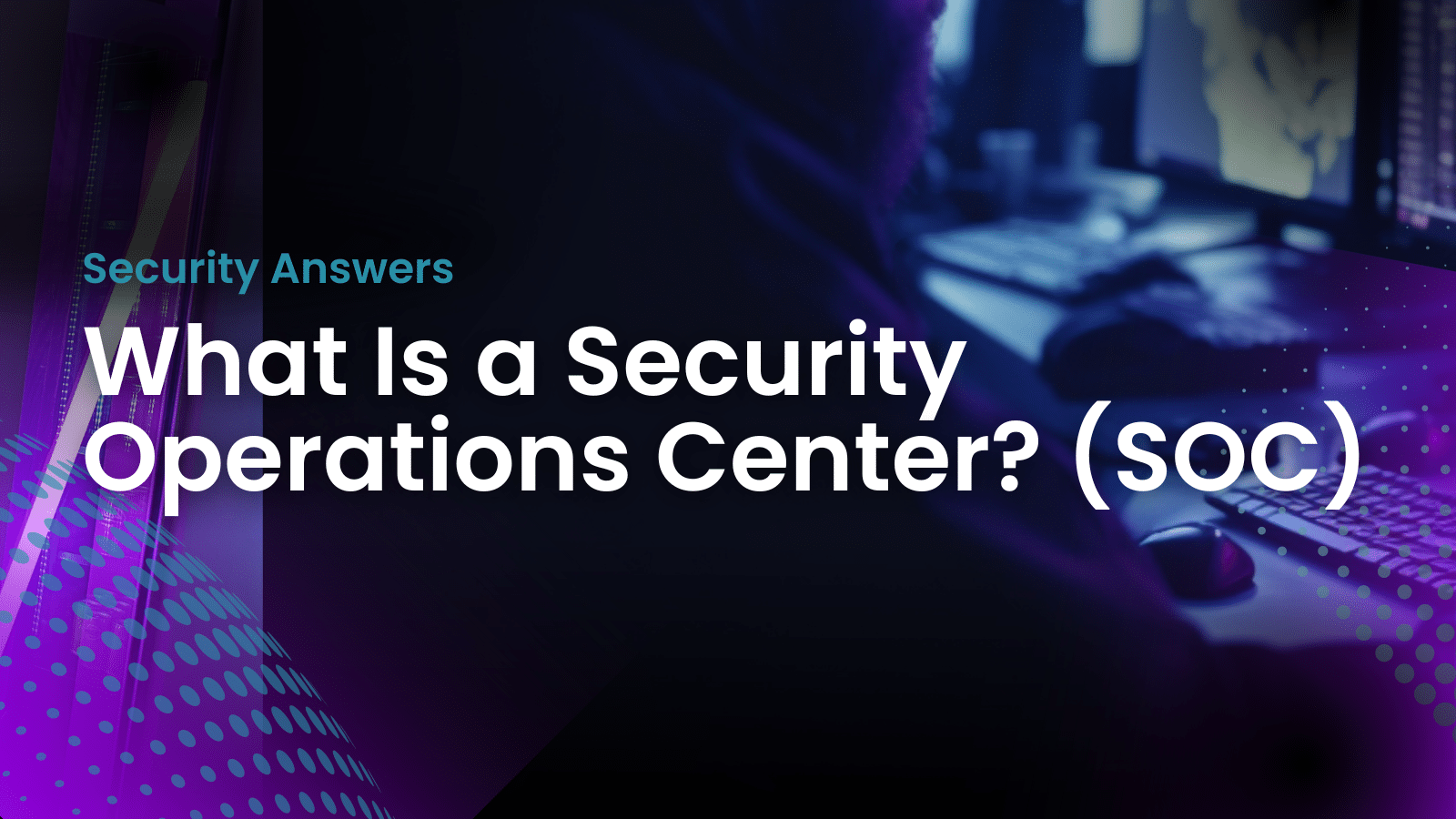What Is a Security Operations Center? (SOC)


A security monitoring team is necessary to combat and mitigate cyber attacks against a company. This is achieved by having personnel work 24/7 to analyze both inbound and outbound traffic. The team’s main task is to find malicious patterns in communication and behavior by both machines and users.
This article will describe what a SOC does, how it’s staffed, and what tools are required to achieve a good level of security monitoring.
A SOC is a room filled with smart people, and some tools.
The SOC
A Security Operations Center (SOC) is a centralized unit within an organization that plays a crucial role in improving an organization’s cybersecurity posture. It is dedicated to monitoring, detecting, preventing, and responding to security incidents or events.
Key Functions
SOC activities and responsibilities fall into three general categories:
- Preparation, Planning, and Prevention: A Security Operations Center (SOC) is a guardian. It keeps a detailed list of all the assets that need safeguarding. This includes everything from applications and databases to servers, cloud services, and endpoints. It also keeps track of all the tools used for their protection. The SOC also actively works to prevent threats. It does this by recommending preventive actions, including updating software with patches and upgrades, regularly refreshing firewalls, and revising both allow- and blocklists. Moreover, it ensures that security policies and procedures are always up to date. In this way, the SOC is always one step ahead, ensuring the security of its assets.
- Continuous Monitoring and Tools: Using security analytics solutions like a Security Information and Event Management (SIEM) solution, a Security Orchestration, Automation, and Response (SOAR) solution, or an Extended Detection and Response (XDR) solution, SOC teams monitor the entire environment – on-premises, cloud, applications, networks, and devices – all day, every day, to uncover abnormalities or suspicious behavior.
- Threat Intelligence: The SOC is responsible for collecting threat intelligence data and turning it into detection rules.
The Advantages of a SOC
The SOC brings together all the elements of an organization’s security system. This includes its tools, practices, and how it responds to security incidents.
Having a SOC, whether operated internally or outsourced, will lead to a host of benefits. It enhances preventative measures and security policies. It also speeds up the detection of threats and the response to them, making it not only faster but also more effective and cost efficient.
But it doesn’t stop there. It will also boost customer confidence by demonstrating a strong commitment to security. At the same time, it simplifies and strengthens compliance with privacy regulations at all levels – industrial, national, and even global. In this way, a SOC serves as a unifying force, coordinating all aspects of an organization’s security.
Tooling
A SOC requires tools and technologies for its daily operations. Below is a list of the most common technologies. To read more about the tools, follow the links in the list.
- EDR – Endpoint Detection and Response
- NDR – Network Detection and Response
- XDR – Extended Detection and Response
- SIEM – Security Information and Event Management
- SOAR – Security Orchestration, Automation, and Response
Though tools are very important to build a functional and successful SOC, it’s mostly about the people who are working there. They need to have the right mindset and the right skills.
MDR
MDR, or Managed Detection and Response, is an outsourced SOC service operating 24/7 that enhances an organization’s security department and helps it improve its security posture. Read about Truesec’s MDR offerings on our Managed Detection and Response page.
FAQ
SOC stands for Security Operations Center. It’s a centralized unit that deals with security issues on an organizational and technical level.
A SOC is important because it continuously monitors and analyzes data activity to ensure timely detection and response to security incidents.
Unlike traditional security practices that are reactive, a SOC provides proactive security monitoring and incident response.
Key components of a SOC include a skilled security team consisting of security analysts, malware analysts, and threat intelligence experts. A SOC also includes a technology stack and well-defined processes and procedures.
SOC implementation can be challenging due to factors like high operational costs, the need for skilled personnel, and the complexity of managing diverse security systems.